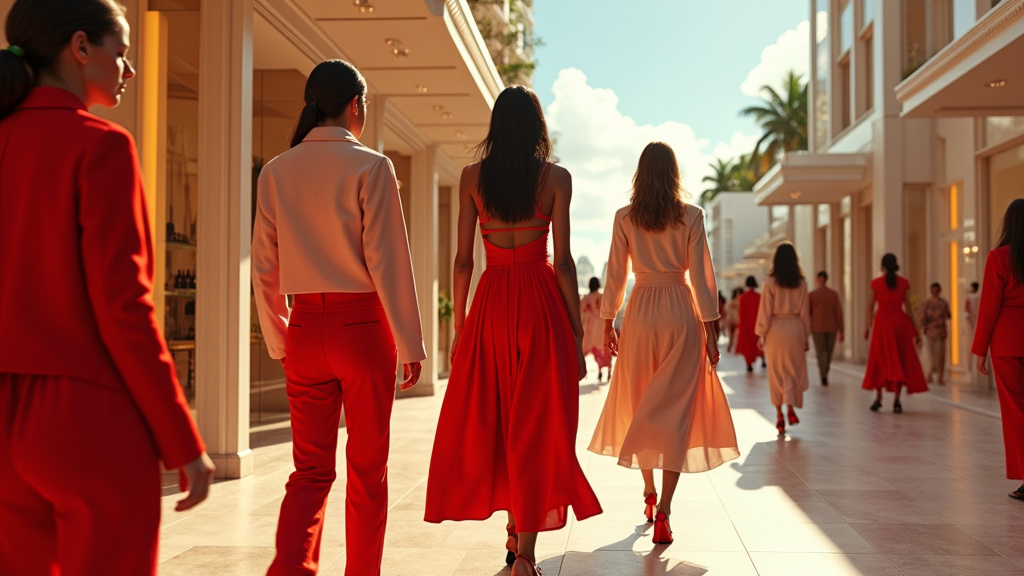Milan, Italy – The prestigious Milan Fashion Week (MFW) Autumn/Winter 2025-2026 season has concluded, cementing its status as a global epicentre of style, innovation, and luxury. Held from February 25th to March 3rd, 2025, the event, orchestrated by the National Chamber of Italian Fashion (CNMI), once again transformed the city into a vibrant hub for the fashion world, showcasing the top collections and trending styles that will define the coming autumn and winter months.
A Return to Elegance and Exuberance
This season marked a significant resurgence of glamour and sophisticated dressing. Following periods of introspection, designers presented collections that exuded confidence, opulence, and a renewed sense of occasion. The runways were a tapestry of rich textures, bold silhouettes, and meticulous craftsmanship, reaffirming Milan’s unparalleled ability to blend tradition with contemporary appeal. From the hushed luxury of some presentations to the unadulterated drama of others, the overarching mood was one of elevated elegance and a desire to embrace fashion’s transformative power.
Key Designer Highlights and Celebrations
Milan Fashion Week AW25-26 was replete with standout performances from established houses. Gucci opened the week with a highly anticipated co-ed show, presented by its design studio following the departure of its creative director. The collection offered a compelling narrative, blending the brand’s heritage with a forward-looking sensibility, hinting at a fusion of quiet luxury and modern sensuality. Prada, under the direction of Miuccia Prada and Raf Simons, presented “Raw Glamour,” a collection that played with distorted proportions and architectural details, offering a sophisticated take on deconstruction. Versace delivered its signature blend of sexiness and boldness, a powerful homage to Gianni Versace’s legacy, with Donatella Versace steering the brand back to its roots of daring cuts and vibrant prints. Rumours of a potential acquisition of Versace by Prada added an extra layer of industry news and intrigue to the proceedings.
Fendi celebrated its centenary with a collection that honoured its rich heritage, showcasing masterful use of fur and leather, with influences from Karl Lagerfeld’s era evident. Dolce & Gabbana embraced an “off-duty model” theme, capturing a cool, nonchalant aesthetic with streetwear-infused pieces and a soundtrack by DJ Victoria De Angelis. Giorgio Armani returned to the Milanese runway, showcasing refined tailoring and sophisticated silhouettes, while Roberto Cavalli presented striking, mosaic-like ensembles and luxurious fur creations. Dsquared2 marked its 30th anniversary with a high-energy show and a subsequent star-studded party, cementing its reputation for showmanship.
Dominant Autumn/Winter Trends
The AW25-26 collections revealed several key trends that are set to dominate the season. Fur, in both luxurious shearling and opulent faux variations, made a strong comeback, appearing on coats, trims, and accessories. Sheer fabrics, particularly lace, offered a delicate yet alluring contrast, seen in everything from ethereal gowns to chic leotards. Silhouettes leaned towards relaxed elegance, with oversized coats and flowing dresses providing comfort and style, while also embracing the resurgence of tight-fitting leggings and skinny-fit pants.
Denim continued its reign, presented in various forms – distressed, ripped, or combined with transparency and fur. Velvet emerged as a key fabric, offering a soft, romantic texture seen in luxurious eveningwear and tailored pieces. Colours like rich Bordeaux were prominent, alongside metallic finishes that added a futuristic gleam. Fringes added dynamic movement to garments, and the ‘mob wife’ aesthetic, characterized by bold prints, leather, and maximalist glamour, notably featured in Versace’s collection. Accessories also played a crucial role, with an emphasis on soft, slouchy bags and statement footwear.
Sustainability and Cultural Inclusion
Milan Fashion Week continued to highlight the industry’s growing commitment to sustainability. The CNMI itself has been actively involved in promoting eco-conscious practices, with initiatives like the Sustainable Fashion Awards recognizing brands for their environmental efforts. Gucci’s “Denim Project,” focused on circular economy principles, was a notable example of the industry’s move towards more responsible production. Beyond sustainability, the event also underscored a broader cultural shift towards inclusivity. The second edition of the Black Carpet Awards, honouring excellence among people of color in Italy, took place during the week, promoting equity and representation within the creative industries. Emerging designers also presented their unique visions, injecting fresh perspectives and experimental energy into the Milanese fashion landscape.
The Enduring Influence of Milan
As Milan Fashion Week AW25-26 draws to a close, it leaves a definitive mark on the global fashion agenda. The event reinforced Milan’s position not just as a showcase for luxury brands, but as a dynamic platform for innovation, cultural dialogue, and the evolution of fashion news. The collections presented offer a clear vision for the upcoming season, blending timeless elegance with contemporary edge, and signalling a bright, glamorous future for top fashion trends.





